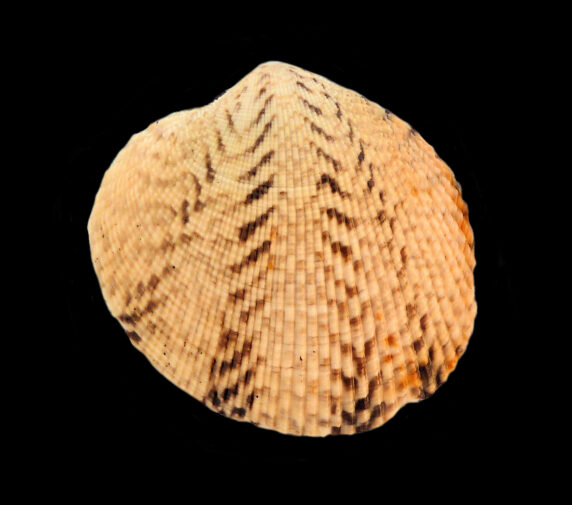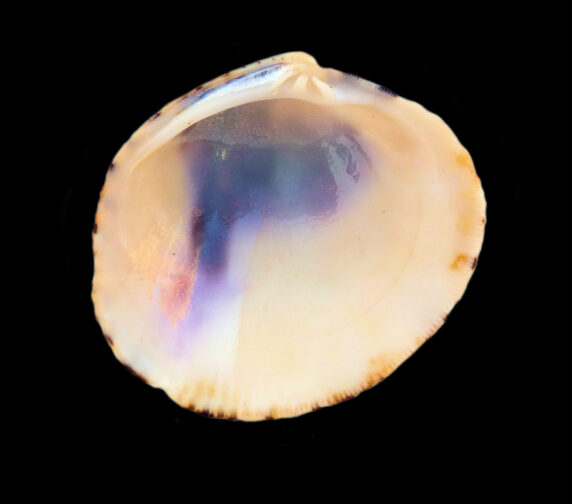Grate Clam Shell, Leukoma grata

 Grate Clam Shell, Leukoma grata. Shell collected off the beach of Bahía Concepción, Baja California Sur, October 2019. Size: 4.1 cm (1.6 inches) x 2.8 cm (1.1 inches). Collection, photograph and identification courtesy of Bob Hillis, Ivins, Utah.
Grate Clam Shell, Leukoma grata. Shell collected off the beach of Bahía Concepción, Baja California Sur, October 2019. Size: 4.1 cm (1.6 inches) x 2.8 cm (1.1 inches). Collection, photograph and identification courtesy of Bob Hillis, Ivins, Utah.
Phylogeny: The Grate Clam, Leukoma grata (Say, 1831), is a bivalve mollusk that is a member of the Veneridae Family of Venus Clam Shells. The genus Leukoma is one of one hundred seven genera in this family, and there are twenty-three species in this genus. They are also known as the Grid Clam, the Lesser Littleneck, and the Multi-colored Clam and in Mexico as Taca Menor.
Description: The Grate Clam shell is oval to circular in profile, thick in substance, and somewhat inflated. The beak is fairly pronounced, and has small cardinal teeth. The exterior of the shell is sculpted with radial lines and finer concentric lines. These lines give rise to the common name for this clam of “grate” or “grid.” This clam is highly variable in coloration and even two valves from the same shell may differ. The exterior color is gray to cream, with a variety of brown or black lines, specks, blotches, or chevrons possible. The interior is white to purple, sometimes with orange or brown blotches. Grate Clam shells reach 5.3 cm (2.1 inches) in length and 5.0 cm (2.0 inches) in height.
Habitat and Distribution: Grate Clams are found within mud and muddy sand substrates and are found in the intertidal zone and to depths of 390 m (1,280 feet). They are a subtropical to tropical Eastern Pacific species that are found in Mexican waters of the Pacific Ocean from from Magdalena Bay, Baja California Sur south to Guatemala. They are found throughout the Gulf of California.
Ecology and Behavior: Grate Clams are suspension feeders that feed primarily on planktonic algae and suspended organic matter. They are gonochoric and reproduce sexually, through broadcast spawning, with external fertilization. Grate Clams are known to host the invasive myzozoa (metazoan organisms related to the cnidarians) Perkinsus marinus. This endoparasite is native from the Atlantic Ocean. There is no mention in the available literature of them engaging in any types of commensal, or symbiotic relationships. Grate Clams are edible and have been an important food source for native peoples. They are fished by artisanal, commercial and recreational fishermen. From a conservation perspective they have not been formally evaluated however they are fairly common with a relatively wide distribution and should be consider to be of Least Concern.
Synonyms: Protothaca grata, Venus discors, Venus fuscolineata, Venus grata, and Venus tricolor.